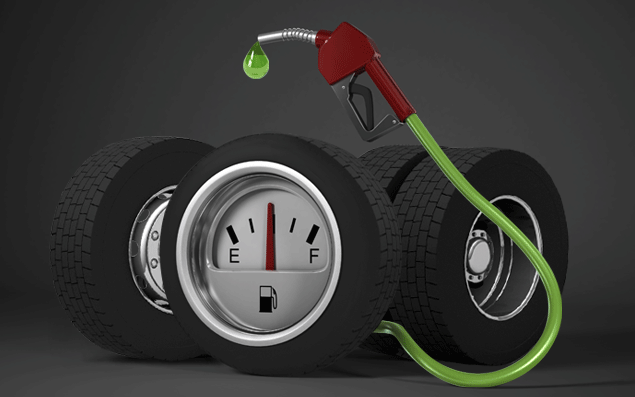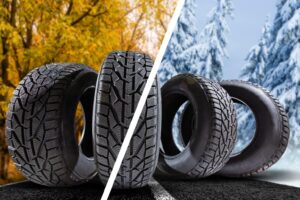The fuel prices are always an issue of concern to car owners since they keep changing. While the focus often falls on engine performance and driving habits, an unsung hero is playing a significant role in fuel efficiency: your tires.
Tyres affect fuel consumption in different ways, and below are some of the factors you should consider if you want to have a better performance of your car and perhaps save some bucks on fuel. In this blog, one gets an understanding of tyre selection, its functioning and impact on the mileages one car gets per litre.
Understanding Rolling Resistance
The link between tyre and fuel efficiency is well explained by a certain term referred to as rolling resistance. This is the amount of kinetic resistance that a tyre is able to offer between itself and the ground on which it is rolling. The reduced rolling resistance means that less energy is required to maintain the tyre in motion; therefore, the engine’s load is reduced and fuel consumption is minimized. Research has found that rolling resistance can make up to 20% of the car fuel utilization making it important to reduce it.
Tyre Design Features that Affect Rolling Resistance
Several tyre design features directly influence rolling resistance. Here’s a breakdown of the key factors:
- Tyre Compound: The type of rubber used in the tyre tread significantly impacts rolling resistance. Tyres with a softer, more grippy compound offer better traction but tend to have higher rolling resistance. Conversely, tyres formulated with a harder compound prioritize lower rolling resistance for improved fuel efficiency, but may compromise slightly on grip.
- Tread Pattern: The design of the tread pattern also plays a role. Tyres with a more aggressive tread pattern, often seen on off-road or performance vehicles, provide enhanced grip but come at the cost of increased rolling resistance. On the other hand, tyres with a smoother, more symmetrical tread pattern are designed for lower rolling resistance and better fuel economy.
- Tyre Size and Weight: Larger and heavier tyres have a higher rolling resistance compared to smaller and lighter ones. This is because it takes more energy to get a heavier tyre rolling and keep it moving. While larger tyres might offer advantages like improved handling or a smoother ride, they can also lead to a slight decrease in fuel efficiency.
Choosing Fuel-Efficient Tyres
Fortunately, there are ways to choose tyres that prioritize fuel efficiency. Here’s what to look for:
- EU Tyre Label: In Europe, tyres are mandated to carry a label that displays three key ratings – rolling resistance, wet grip, and noise emission. The rolling resistance rating is denoted by a letter grade, with A being the most fuel-efficient and G being the least. Opting for tyres with an A or B rating is a good strategy for maximizing fuel economy.
- Fuel Efficiency Ratings: Many tyre manufacturers also incorporate their own fuel efficiency ratings into their product information. These ratings can be a helpful indicator when comparing different tyre options.
- Eco-Friendly Tyres: Several manufacturers offer tyre lines specifically designed for low rolling resistance and improved fuel economy. These tyres often utilize specialized tread patterns and advanced rubber compounds to minimize energy loss.
Maintaining Tyres for Optimal Fuel Efficiency
Beyond choosing the right tyres, proper maintenance practices can further enhance fuel efficiency. Here are some key points to remember:
- Correct Tyre Pressure: Underinflated tyres have a higher rolling resistance, leading to increased fuel consumption. Regularly checking and maintaining the recommended tyre pressure, as specified in your car’s manual, is crucial.
- Alignment and Balancing: Improper wheel alignment and imbalance can cause tyres to wear unevenly and increase rolling resistance. Schedule regular wheel alignments and balancing to ensure optimal tyre performance and fuel efficiency.
- Tread Wear: As tyres wear down and lose tread depth, rolling resistance increases. Replace tyres before the tread reaches the minimum legal limit to maintain good fuel economy and safe driving performance.
Conclusion: Tyres – A Pathway to Savings and Sustainability
By understanding the impact of tyres on fuel efficiency and making informed choices, you can significantly contribute to reducing your car’s fuel consumption. Choosing fuel-efficient tyres, maintaining proper pressure, and practicing good tyre care habits all work together to save you money at the pump and minimize your environmental footprint. So, the next time you consider car maintenance, remember – your tyres are silent partners in your quest for fuel efficiency and a greener drive.




